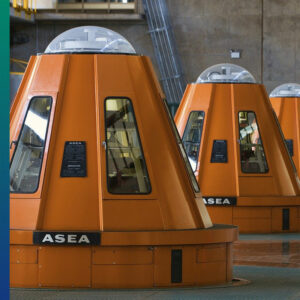
Al Gore was laughed at, at the time when he presented An Inconvenient Truth. If more politicians and engineers had taken him seriously, we would have had fewer problems with the climate today. In the case of climate change, prevention is also cheaper than a solution.
But with a despondent attitude, a turning point has never been achieved. Perhaps technological innovations can combat climate change?
Recently I watched some documentaries by and about Greta Thunberg. Her strongest comments were: “Don’t listen to me, listen to science” and “Stay hopeful, because from hope comes action”.
Some of the links are affiliate links. As an affiliate associate, we earn a commission when you purchase any of the products offered through the shared links at no extra cost for you. This helps us maintain this website.
Table of contents
Can technological innovations combat climate change?
Provided that the big picture is taken into account and attitudes towards materials and behavior are also adapted, technological innovations can certainly contribute to halting climate change.
The dangers of solutions

My father had huge faith in technology. Whatever the problem, he was convinced that a technological solution could always be found. I think there are some snakes in the grass.
Indolence is lurking
Because they think a solution will be found anyway, companies and individuals make too little effort to change their attitude towards fossil fuels.
The solution is the problem
Solutions create new problems that can be worse than the problem that was solved. Plastic is a good example of this. This cheap material that can be used for so many purposes has created the problem of plastic soup.
Boyan Slat with his Ocean CleanUp project thought he had the solution for the plastic soup. But his vacuum cleaner-like device has a negative effect on ocean life in the immediate vicinity.
Short-sightedness
65 Nations committed to reducing Greenhouse gas emissions to zero by 2050. In addition, more than 100 business leaders pledged to work to limit global warming to 2 degrees Celsius.
What happens next? We have seen the effect of scaling down activity during the lockdowns of 2020. That yielded less benefit than hoped for and it is not realistic to shut down economies.
Now that the earth has warmed by 1 degree C, we can already see the effect: violent storms, floods, and drought. What will that be with 2 degrees extra?
Technological innovations
As said before, it is better to keep hope. There are several projects that are promising. As a layman, I cannot foresee the consequences, but I think it is better to at least do something and adjust if necessary.
Interconnection and storage

Solar energy and wind energy are not new anymore. Yet sun and wind are not always available, so energy must either come from somewhere else or be stored.
Lithium-ion batteries offer a good storage option. However, the disadvantage is that the lithium mines are very polluting.
There are developments that use gravity and kinetic energy for storage.
A possibility for power generation may be to take advantage of the action of ebb and flow.
Transparent solar cells
If windows can generate solar energy, the roofs no longer need to be covered with heavy panels.
Removing carbon from the atmosphere
Many scientists are committed to removing carbon from the air. After removal, something must be done with carbon, either storage or conversion into another substance.

Storage usually takes place underground where the carbon under pressure will turn to stone. It is a costly process because there is no economic benefit to be gained.
It would be more economical to convert the carbon into something useful, the way trees do.
Smart technology
By using IT to deal more economically with raw materials, a lot can be saved on electricity consumption and costs.
Hamburg and Copenhagen are amongst the several cities that use smart technology to create a cleaner climate for their residents.
Related: Why is Digital Sustainability Important? 11 Conscientious Tips to Help You
Glow-in-the-dark solar powered
There are cycle paths in Poland and the Netherlands with glow-in-the-dark road surfaces. There are undoubtedly more applications to invent for this form of lighting.

Robots
Robots are already occupying a place among humans. As a help (Alexa) and to combat loneliness among the elderly. Not directly aimed at fighting climate change, although you never know the consequences of someone not feeling lonely anymore.
A robot bee is being developed in Japan to pollinate flowers. Robots can clean and calculate the most economical way to do so.
Solutions I don’t like
There are several new or innovative solutions I don’t like. I’ll mention them anyway because other people believe in them.
Nuclear innovations
In the 1970s, I demonstrated against nuclear energy and nuclear weapons. I can’t just put aside my aversion to nuclear energy with its major problem of nuclear waste. Even though it is said that there are new developments in that area.
Different cattle feed

Burping and farting cattle release methane into the atmosphere. By giving cattle seaweed to eat instead of grass, these emissions can be reduced by 80%.
Why don’t I like this innovation so much? Because I think it’s strange to feed animals that serve as human consumption when that food can also be given directly to people. Animals are regarded as serving us. We could consider ourselves on an equal footing with animals and nature.
Laboratory food
There is a lot of experimentation with food that is made in a lab. I am not completely opposed to this because I know too little about it.
If it means good food is genetically engineered, I’m not thrilled. But I do see opportunities for experiments with seaweed and insects. And who knows what the lab technicians and designers will come up with next.
Combating climate change
By not taking action now, economists estimate the cost of damage in the future will dwarf the money saved now. The old adage still holds true: prevention is better than cure.
The economy cannot be healthy in an unhealthy environment. Some big changes we can only leave to the scientists and engineers. It is – in my view – very interesting to see what solutions they come up with.
In addition, we as individuals and consumers can of course also do a lot.
Related: Review: Smart Power Strips save Energy and have other Advantages
Do you know any interesting developments? Tell us in the comment box below.


I had to pause a lot while reading this article, you’ve linked so many useful resources. I still remember how I felt after watching An Inconvenient Truth. It made me so sad and helpless seeing how many things were done wrong and how little governments around the world were eager to do…
And then come to realize how old that movie already is and how little has been changed since. I understand what you say, I had the same feeling then, and still at present.
COP26 is just over. Ugh, it annoys me immensely that leaders are not true leaders but only talking heads with no substance. Such a lost chance.
Anyway, let’s keep our spirits up and keep on doing what we think is right. 🙂 Thanks for your comment and stay healthy, London.